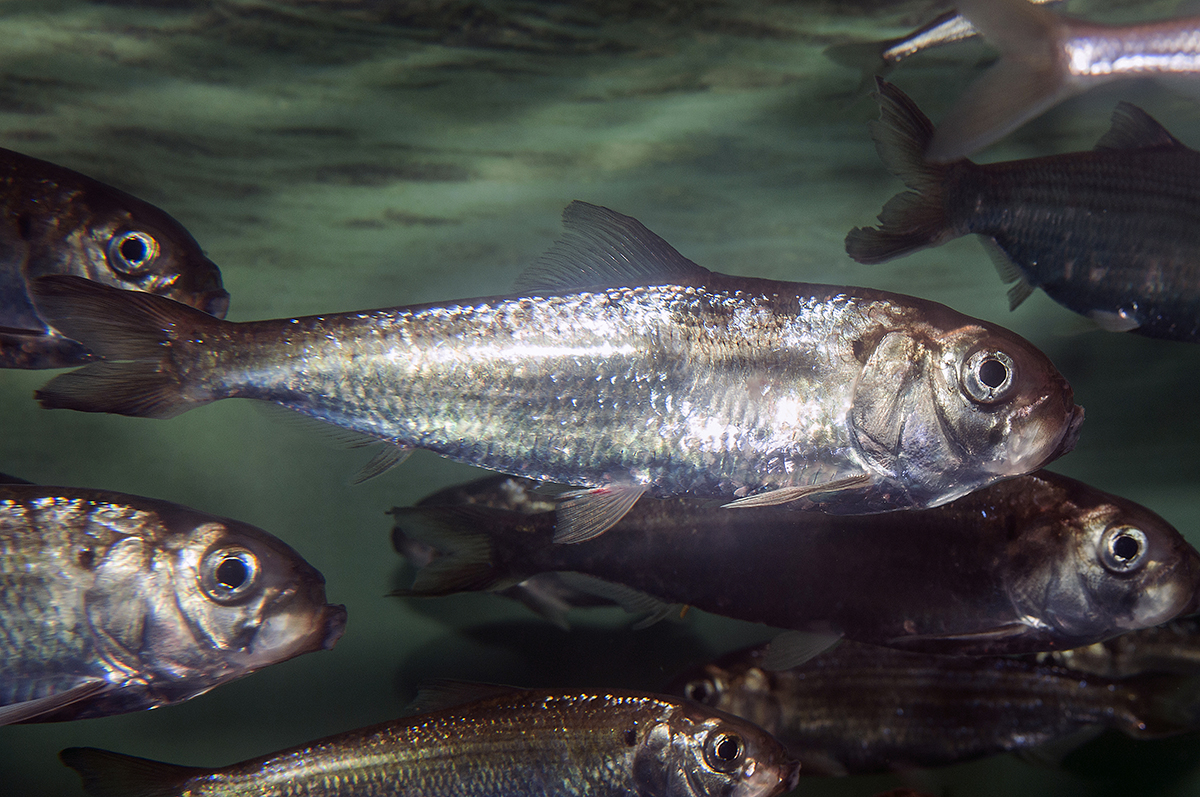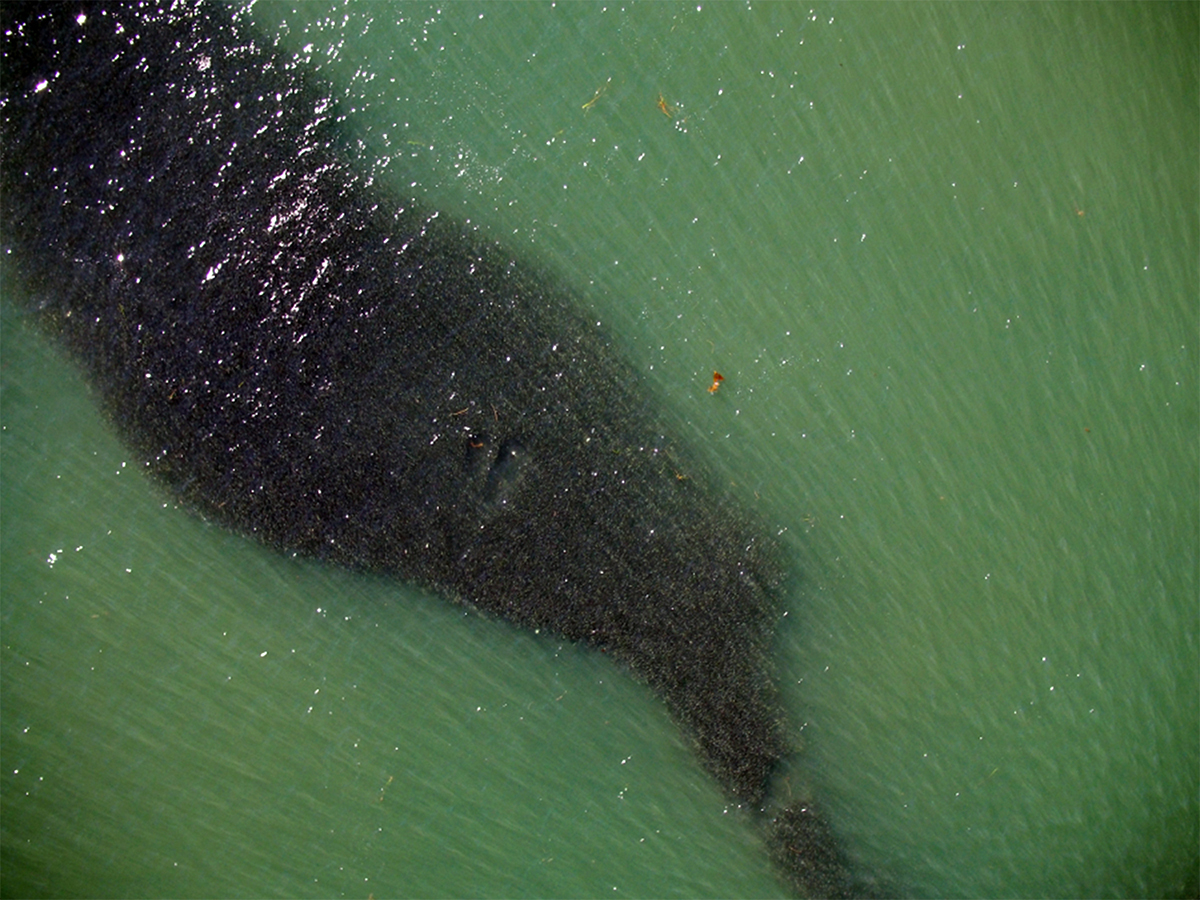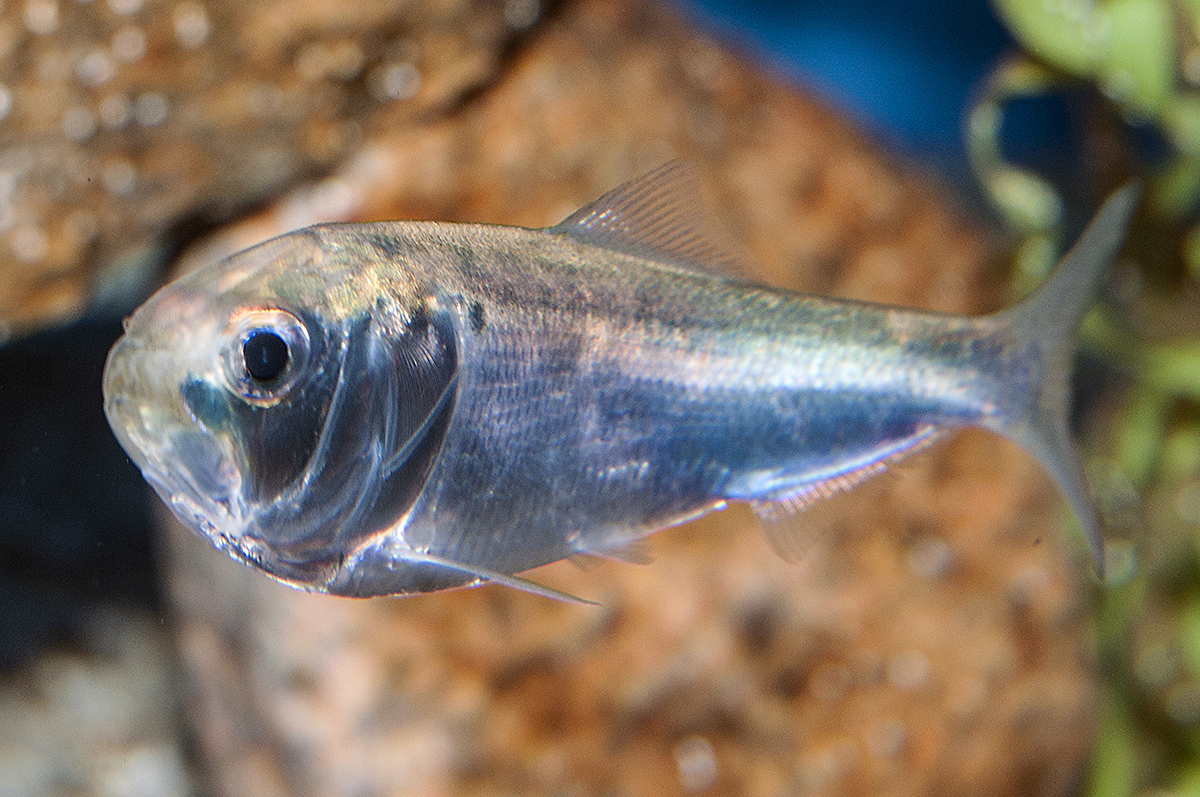
Years ago, I was slowly boating out to go scuba diving during the summer when we came upon a large swirling motion of water at the surface — a massive school of Atlantic menhaden being attacked from the underneath by hungry bluefish.
I quickly donned my drysuit and hopped into the water with my video camera. The footage revealed just how viciously the bluefish struck the menhaden from below, and just as quickly they were gone. Only later I found out that you really don’t want to be in the water when bluefish are blitz-feeding like I observed, as they are known to bite their way through a diver’s wetsuit. I was glad I didn’t know this when in the water with both species!
Supporter Spotlight
Atlantic menhaden can be found in the estuaries and coastal waters from as far north as Nova Scotia south to the northern portion Florida and are thought to be all from the same stock.
This species is also referred to as pogy or fatback, depending upon where in the country you find it.
Atlantic menhaden are small, blue-black fish with shiny, metallic-like sides and a deeply forked tail. They have an obvious dark spot on the shoulder just behind the gill plate, often followed by two or three mixed, or irregular rows of smaller spots. They spawn in the ocean then enter the estuaries for food. They swim in large schools and provide an important role in marine ecosystems as a forage fish for larger predators.
Biology
“Both adult and juvenile menhaden form large, near-surface schools of fish that are so thick in numbers that they look like an oil slick when viewed from the air,” said Holly White, fisheries biologist with the North Carolina Division of Marine Fisheries. “This takes place mainly in nearshore waters and estuaries from early spring right through until early winter. By summertime, the schools of fish will separate by age and size along the coast, with larger and older menhaden found farther north and youngsters further to the south.”
From the fall to early winter, all menhaden, regardless of age or size, move south off of the North Carolina capes to spawn, White said.
Supporter Spotlight
The fish become sexually mature as young as a year old, up to 3 years of age. They spawn from New Jersey south to the Carolinas and most spawning occurs between 20 and 30 miles offshore during the winter, according to information White provided.
Their eggs are buoyant and when they hatch, the larvae are carried into estuarine nursery areas by prevailing ocean currents. Juveniles spend most of their first year in estuaries, moving out into the ocean during late fall.
Research indicates that the number of new fish that enter the fishery annually — the year-class strength — is likely determined by environmental factors, including currents, temperature and predation, acting on larvae as they approach and enter inlets and nursery areas, she said.
Atlantic menhaden can live up to 10 years. They grow to about 15 inches in length, on average, and weigh up to a pound.
Menhaden are highly effective filter feeders that feed primarily on microscopic plankton. Water is pushed through specialized gill rakes that are shaped into a basket which allows them to capture and eat plankton.
Menhaden are an important prey species in food webs, providing a link between primary production and higher organisms by consuming plankton and providing forage for species such as striped bass, bluefish and weakfish, to name just a few.

Commercial fishery
The Atlantic menhaden commercial fishery is made up of a reduction fishery, in which the industry “reduces” the whole fish into fishmeal, fish oil and fish solubles, and a bait fishery.
“The reduction fishery first began in New England during the early 1800s and spread south after the Civil War,” said Special Assistant to Councils Chris Batsavage with the North Carolina Division of Marine Fisheries.
He said the reduction fishery grew with the advent of purse seines in the mid-1800s and reached peak landings in 1956 at 712,100 metric tons.
“At the time, over 20 menhaden reduction factories ranged from southern Maine to northern Florida. In the 1960s, the Atlantic menhaden stock contracted geographically, and many of the reduction factories north of the Chesapeake Bay closed due to a scarcity of fish,” said Batsavage.
Consequently, reduction landings dropped to 161,000 tons in 1969.
In the 1970s and 1980s, the menhaden population began to expand primarily due to a series of above-average year-classes entering the fishery, and then reduction landings rose to around 300,000-400,000 metric tons.
At that time, adult menhaden were abundant in the northern half of their range in the United States and, because of this, the reduction factories in Canada and New England began rapidly expanding and processing menhaden again by the early to mid-1970s. By 1989, all New England-based shoreside reduction plants had closed, mainly because of regulations put in place to do away with odors, according to the Atlantic States Marine Fisheries Commission.

“During the 1990s, the Atlantic menhaden stock contracted again, largely due to a series of poor to average year-classes. Over the next decade, several reduction plants consolidated or closed, resulting in a significant reduction in fleet size and fishing capacity. By 2006, there was only one remaining reduction plant in operation on the Atlantic coast processing menhaden into fishmeal and oil. This is the Omega Protein plant located in Reedville, Virginia, which is still operational today,” said Batsavage.
In 2019, roughly 150,000 tons were landed for reduction purposes. Commercial landings in 2019, including reduction, bait, bycatch and episodic event landings, were 208,837 tons, or 96% of the total allowable catch.
“This represents a 9% decrease in landings from 2018,” said Batsavage. “However, the trend in total landings for bait purposes has increased in recent years, especially in the New England states.”
Menhaden landings in North Carolina ranged from around 100 million to over 300 million pounds per year from the early 1950s to the mid-1980s, with the highest landings occurring in 1981 at over 309 million pounds.
Landings decreased from the late 1990s to 2004 ranging from just over 40 million pounds to around 110 million pounds per year.
“The last reduction plant in North Carolina closed in 2005. Since then, menhaden landings in North Carolina have been for bait purposes only and have ranged from around 400,000 to 3.5 million pounds per year,” said Batsavage.
Atlantic menhaden remains a popular baitfish for those targeting spotted seatrout, bluefish, king mackerel, tuna and sharks. Anglers can purchase live menhaden from floating “bait barges” along coastal waterways. Contact a tackle shop for availability and locations.








